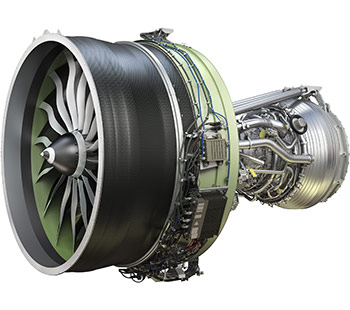Leeham News and Analysis
There's more to real news than a news release.
Could an NMA be made good enough?
By Bjorn Fehrm
Subscription Required
Introduction
March 23, 2017, © Leeham Co.: After showing there exists an NMA (New Midrange Aircraft) gap, the next question follows: Can an aircraft be made for the segment that can carve out a big enough slice to make it a worthwhile effort?
It’s a tough question. Any new aircraft will cost at least $10bn to develop for the airframe alone. To this one shall add the engine development. There exists no suitable engine for such an aircraft. To motivate the investments, the aircraft has to bring a substantial performance improvement compared to existing aircraft. Can it?

Figure 1. The NMA takes more and more the shape of a 767 replacement (A United 767-200). Source: United
We go through the key areas that can bring improvements and check if enough progress can is made until an NMA entry into service in 2024 or 2025.
Summary:
- Existing aircraft are either too little or too much aircraft to fill an NMA role.
- By careful design choices, especially for the fuselage, a new aircraft can achieve the required performance.
Major fleet decisions may not be positive for Airbus, Boeing
Pontifications is off this week.
Subscription Required
Introduction
March 20, 2017, © Leeham Co.: There are some major fleet decisions that will probably come down the pike this year at American, Delta and United airlines. Not all of them are going to be viewed positively by Airbus and Boeing.
 There is also a serious warning sign emerging from the Middle East that could have serious, negative impacts on Airbus and Boeing.
There is also a serious warning sign emerging from the Middle East that could have serious, negative impacts on Airbus and Boeing.
Summary
- American Airlines doesn’t want its Airbus A350-900s any more. Consolidation with US Airways appears to have made these surplus.
- Delta Air Lines, which so far eschewed any orders for the Airbus A320neos and Boeing 737 MAXes, is understood to be readying a Request for Proposals to be issued this year.
- United Airlines doesn’t want its Airbus A350-1000s any more. Picking up cheap Boeing 777-300ERs appear to have made these surplus.
- Emirates Airlines, reacting to Brexit and Donald Trump’s travel bans, is undertaking a full business review in response to a sharp drop in bookings.
Bjorn’s Corner: Aircraft engine maintenance, Part 3
March 17, 2017, ©. Leeham Co: In the last Corner, we showed graphs of the yearly flight hours for engines on single-aisle aircraft. Now we will deduce the market for engine overhauls from these graphs.
These will show which engines generate a maintenance volume that is interesting for engine overhaul companies and which engines are niche.
Based on the market size, we will then go through how an engine is maintained when new, mature and at end-of-life.
Bjorn’s Corner: Aircraft engines maintenance, Part 2
March 10, 2017, ©. Leeham Co: Last week we started the series how airline turbofans are maintained. We described the typical work scopes and what the intervals were for different single-aisle engines.
Before we can describe the engine maintenance market we must get a feel for the market size for different engine types.
We will start with understanding the single-aisle engine maintenance market. Read more
Singapore 777-9 order pressures, but does not kill A380
Feb. 16, 2017, © Leeham Co.: Last week’s order by Singapore Airlines for 20 Boeing 777-9s and 19 Boeing 787-10s immediately was viewed by some as the death

Boeing 777-9.
knell for the Airbus A380.
The 777-9 order would start the final spiral down for the A380, some contend.
This overstates the case and misunderstands the nature of the order.
The A380 is in trouble, there no doubt about that. The 777-9 is putting pressure on the A380. There’s no doubt about this, either. But the contention the Singapore 777-9 order sends the A380 on a death spiral is wild fantasy.
An Airbus official appears today at the annual conference of the Pacific Northwest Aerospace Alliance (PNAA) in Lynnwood (WA). Undoubtedly, he will maintain the party line that the future of the A380 is solid. This, too, overstates the case. There can be a future for the airplane, but some major decisions must be made.
Bjorn’s Corner: Aircraft engines in operation, Part 3
February 3, 2017, ©. Leeham Co: In the last Corner, we went through how our airliner engine reacts to the different phases of flight, including what happens when we operate in a hot environment.
We also showed how engine manufacturers make a series of engines with different thrust ratings by de-rating the strongest version through the engine control computer.
We will now look deeper at how engines are controlled and why so-called flat-rating is important. Read more







Assessing the MC-21 future
Subscription Required
Introduction
Feb. 9, 2017, © Leeham Co.: Russia’s Irkut designed a mainline jet to compete with the Airbus A320 and Boeing 737 families that, from a passenger experience
Irkut MC-21 at roll-out. Photo via Google images.
viewpoint, is the best in class.
The MC-21 has a wider fuselage than the A320 (which is wider than the 737). Seats and the aisle are the widest in the class. The overhead bin space is plentiful.
But the airplane is hampered by its environment: Russia itself.
Summary
Read more
Leave a Comment
Posted on February 13, 2017 by Scott Hamilton
Airbus, Boeing, China, Comac, Irkut, Leeham News and Comment, Pratt & Whitney, Premium, United Aircraft
737, A320, Airbus, ARJ-21, Boeing, C919, C929, Irkut, MC-21